Results
-
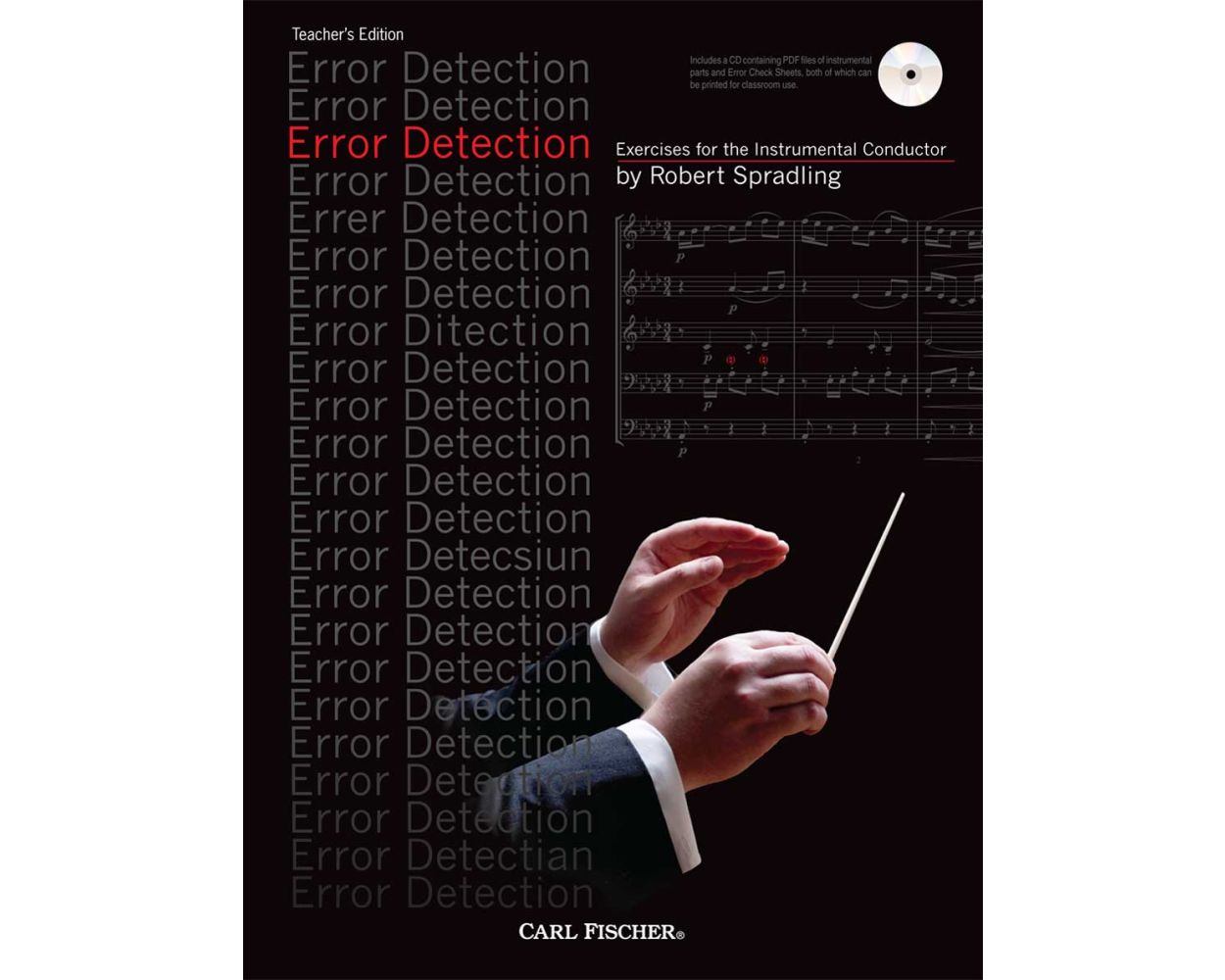 £146.00
£146.00Error Detection - Teacher's Edition - Robert Spradling
The Error Detection: Exercises for the Instrumental Conductor texts are designed to improve the critical listening skills of the conducting student through real music excerpts that contain planted errors in the parts for the conductor to find. Both books contain 54 excerpts from standard band literature from grades 2 to grade 6 so students gain knowledge of real music they can use later, not just non-musical etudes. The teacher's edition contains over 350 pages of materials with analysis sheets and answer keys to help the conducting teacher to easily evaluate the student's progress. The teacher's edition also comes with a CD-ROM containing all of the instrumental parts for all of the musical excerpts as PDF files, so the teacher can just print the amount of parts needed for each example, and the examples are arranged to sound satisfying with as little as five players. The Error Detection program has been tested for over 3 years at major university programs like the University of Minnesota, Illinois State University, and the College-Conservatory of Music at the University of Cincinnati.
Estimated dispatch 12-14 working days
-
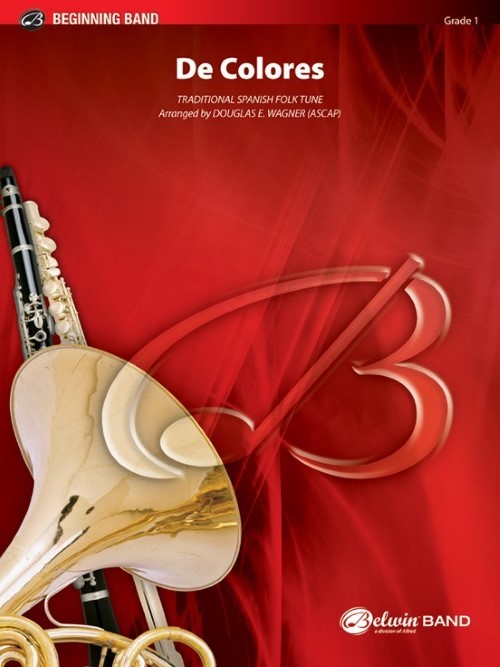 £54.95
£54.95De Colores (Concert Band - Score and Parts) - Wagner, Douglas E.
With charming old world style, this traditional Spanish folk tune, cast in three-quarter time, will be a delightfully colourful addition to your beginning band concert, so much so that the title literally translated means of colours. This charismatic tune will be warmly received.Duration: 2:15
Estimated dispatch 7-14 working days
-
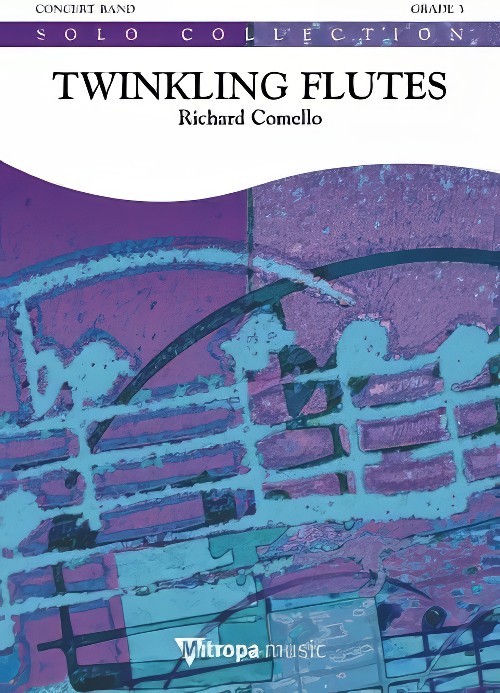 £84.99
£84.99Twinkling Flutes (Flute Duet with Concert Band - Score and Parts) - Comello, Richard
Composer Richard Comello observed that there is practically no music written for two flutes accompanied by concert band, so he composed this delightful piece convinced that this it will fill this little gap in the repertoire. Following a solemn baroque style introduction, joyful characteristic flute sounds develop with subtle band accompaniment. The two flute parts can be played by more players so enabling this piece to put your complete flute section in the spotlight.Duration: 3:30
Estimated dispatch 7-14 working days
-
 £47.50
£47.50Countercurrent - Timothy P. Stakem
Conservative ranges, easy rhythms, and plenty of percussion make this an easily accessible piece for that first concert. There is only one line per part for all of the woodwinds and brass, so there is comfortable security for weaker players. It has a big, aggressive sound, so students are sure to enjoy playing this new and exciting work.
Estimated dispatch 7-14 working days
-
 £71.50
£71.50Stars and Stripes Forever Trio - John Philip Sousa
Americas most famous march, written by the most famous band leader in the world, has entertained and inspired players and audiences since its first performance in 1897. This setting for young bands includes the most famous themes from this great march (the introduction and the trio) so young bands can enjoy performing this world-renowned work. Two versions of the famous piccolo solo are included, one advanced and one easier, so you can feature either a star soloist or the entire flute section.
Estimated dispatch 7-14 working days
-
 £47.50
£47.50Error Detection - Student's Edition
The Error Detection: Exercises for the Instrumental Conductor texts are designed to improve the critical listening skills of the conducting student through real music excerpts that contain planted errors in the parts for the conductor to find. Both books contain 54 excerpts from standard band literature from grades 2 to grade 6 so students gain knowledge of real music they can use later, not just non-musical etudes. The teacher's edition contains over 350 pages of materials with analysis sheets and answer keys to help the conducting teacher to easily evaluate the student's progress. The teacher's edition also comes with a CD-ROM containing all of the instrumental parts for allof the musical excerpts as PDF files, so the teacher can just print the amount of parts needed for each example, and the examples are arranged to sound satisfying with as little as five players. The Error Detection program has been tested for over 3 years at major university programs like the University of Minnesota, Illinois State University, and the College-Conservatory of Music at the University of Cincinnati.
Estimated dispatch 7-14 working days
-
 £84.99
£84.99Twinkling Flutes - Richard Comello
Composer Richard Comello observed that there is practically no music written for two flutes accompanied by concert band, so he composed this delightful piece convinced that this it will fill this little gap in the repertoire. Following a solemn baroque style introduction, joyful characteristic flute sounds develop with subtle band accompaniment. The two flute parts can be played by more players so enabling this piece to put your complete flute section in the spotlight.
Estimated dispatch 7-14 working days
-
£69.99
Get on Board - Stephen Bulla
Stephen Bulla strikes gold again with this accessible but jazzy Trombone section feature. There is plenty of rhythmic fun for everyone while the trombones get that important time out front. The old spiritual "The Gospel Train" lends itself beautifully to a swing-jazz treatment and if there's anyone who knows how to bring the jazz idiom to the concert band setting it's Stephen Bulla. If you prefer, two Trombone soloists can be featured while the rest of the section plays along on the Euphonium part. Your band will want to do this one again and again, and so will you, so Get On Board!
Estimated dispatch 7-14 working days
-
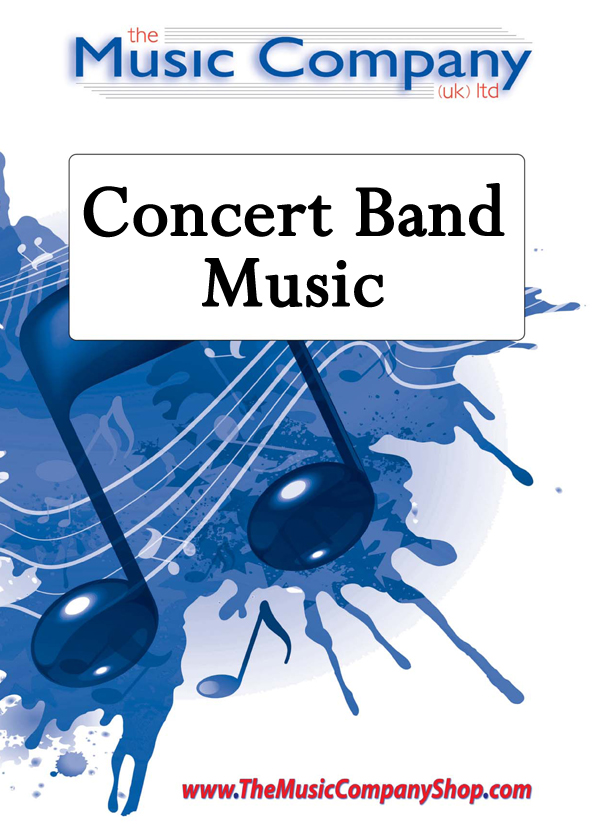 £65.00
£65.00Freyja's Call - Andrew Duncan
According to Viking mythology, following a battle the bravest souls of the slain would be divided between two Gods, Odin and Freyja. Freyja was the Goddess of Love and War and before going into battle many Viking warriors would pray that they would die bravely so that Freyja would take their soul to join her personal army made up of the souls of the bravest of men.'Freyja's Call' describes one of these, a young Scottish soldier, going into battle as part of the Viking army who occupied parts of Scotland for four centuries. First, a slow theme is heard, Freyja's theme, which is the soldier praying to Freyja to keep a watch on him. Then the drums introduce a new rhythm which announces the beginning of the battle.A Celtic Jig is used to describe the progress of the battle with the jig played quietly at first then gradually louder with more percussion being added until a full ff section signifies the soldier fighting the enemy directly.Suddenly, the music drops back to the quiet Jig theme. The soldier has been slain, but will he be chosen by Frejya? After a short time, Freyja's theme is heard as the brave soldier is taken to Freyja's heavenly army of brave warriors, and the piece then ends in triumph.
In stock: Estimated delivery 1-3 days
-
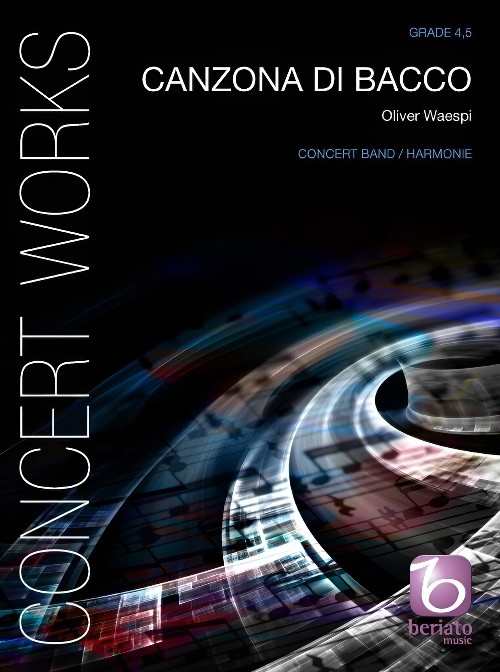 £129.99
£129.99Canzona di Bacco (Concert Band - Score and Parts) - Waespi, Oliver
This piece comprises a series of variations on the melody of Ami, dans cette vie (Friend, in this life), an 18th century French song. Like the famous poem Canzona di Bacco by Lorenzo de Medici, this song invites the listener to enjoy life, friendships, love and wine while there is still time to do so. The epicurean nature of this text contrasts with a deeply melancholic melody, a contradiction which is explored in the present work. After a somewhat turbulent first part, the original melody is revealed in a serene and pensive middle section which highlights several soloists. In the last movement, the atmosphere is transformed to become increasingly exuberant, like a Bacchus incantation. The piece concludes with a final dazzling statement of the original theme.Duration: 11.15
Estimated dispatch 7-14 working days
